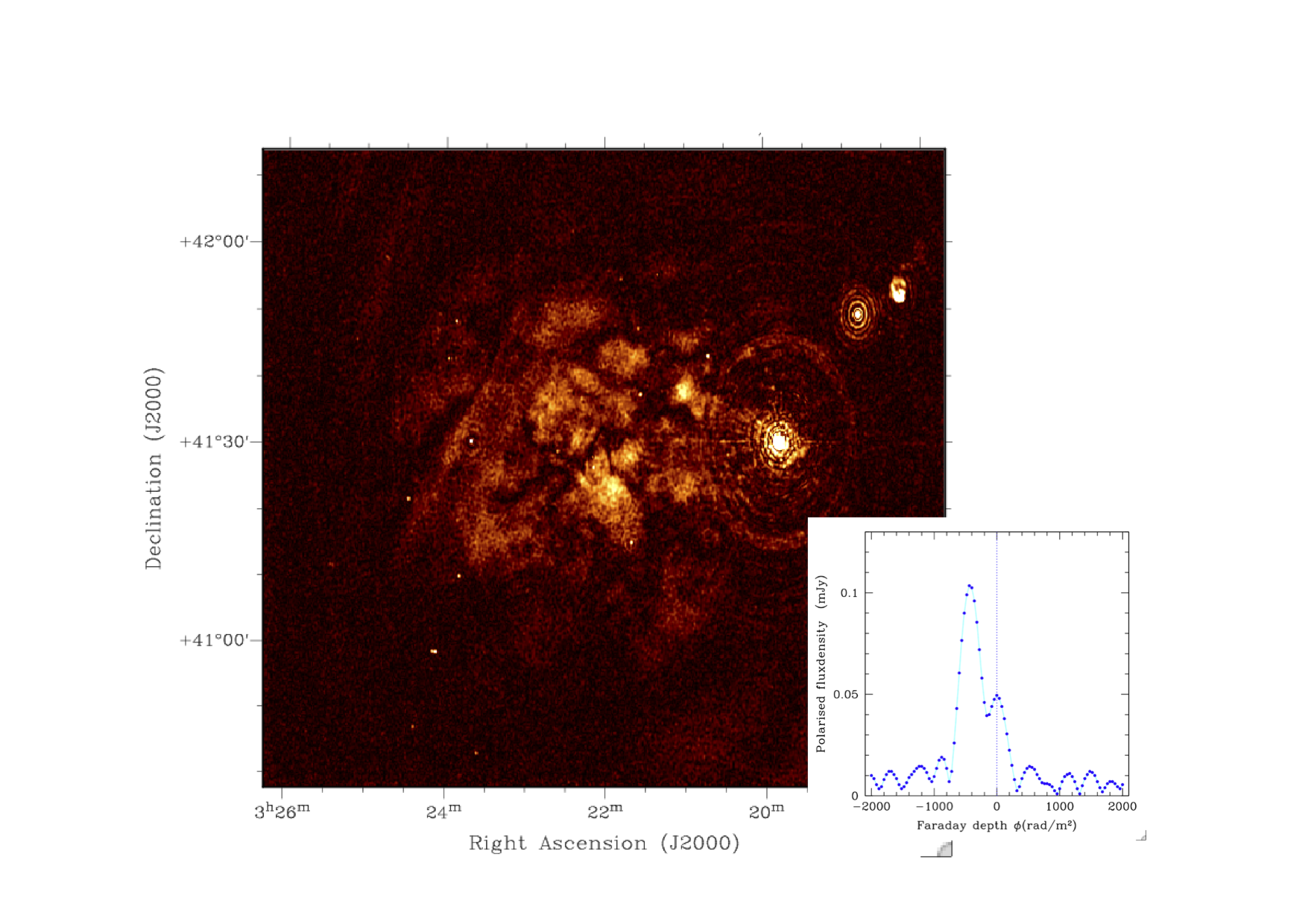Daily Image
20-10-2010High dynamic range polarisation imaging with an old telescope
| Submitter: | Ger de Bruyn |
| Description: | Radio polarimetry is often considered to be difficult. And by many it is even considered to be uninteresting. Of course I disagree on both counts. I am, however, not the only one and to support this view I only need to point to the large number (20+) of students, postdocs, and staff members - all associated with the LOFAR Magnetism Key Science Project - that have gathered this week at ASTRON to reduce recent LOFAR data in search for polarized signals. The image above, however, is not from LOFAR but taken with a telescope that will celebrate its 40th anniversary coming Friday. It shows the polarised intensity distribution in a 21 cm field centered about 30' East of 3C84, the bright source on the right at a Faraday depth of +80 rad/m2. The image shows a complicated pattern of emission, with a peak brightness of only tens of microJy per PSF (smoothed to 30"), separated by dark alleys. All of this emission is from our Galactic foreground which is rather complex in this directio. For a detailed study look out for a paper by Brentjens (2010). The rms noise in the full resolution Q and U image (made from a complete 6x12h synthesis in October 2007) is only 6 microJy and thermal noise limited in most of the image. The apparent flux density of 3C84 itself ranges from 6 - 4 Jy depending on frequency (1300-1460 MHz) so we are talking here about a formal dynamic range of close to 1,000,000:1. And the brightest source was not even in the centre but at a difficult part of the primary beam, that is at the 25% point. The inset shows the Faraday spectrum of one of the fainter polarised sources in the image. It peaks at -430 rad/m2, with a small instrumental polarisation peak at 0 rad/m2. Many polarised sources are visible. The RMSF (see Brentjens & de Bruyn, 2005) has a width of about 280 rad/m2. These results are currently being written up in a couple of papers. |
| Copyright: | Ger de Bruyn |
| Tweet |  |
